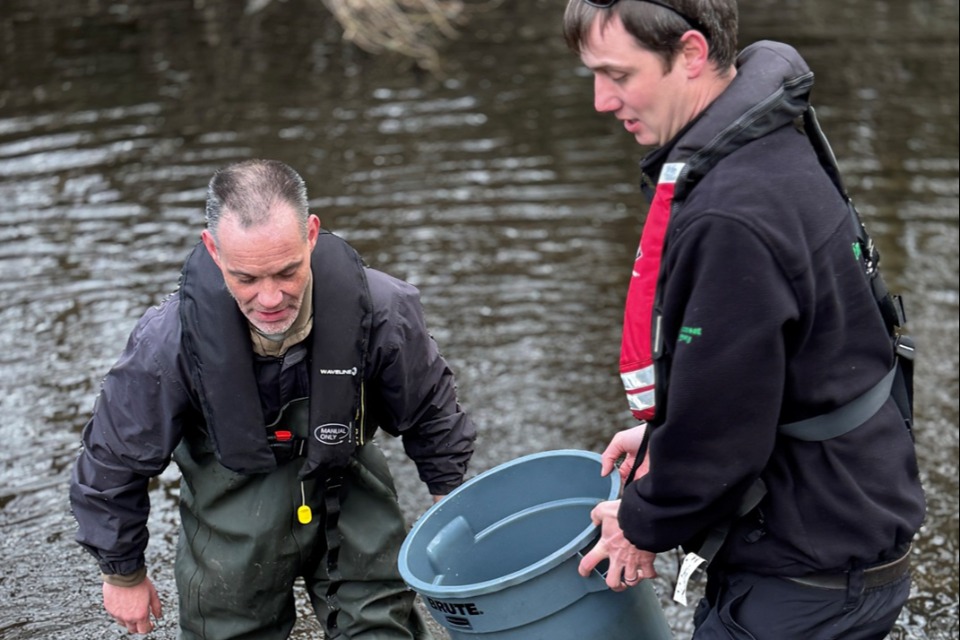The Environment Agency has boosted the populations of dace, chub and roach in Greater Manchester as 4,000 fish have been released into the River Tame.
The fish were released at two locations in the river, near Hyde.
The Fisheries Improvement Programme, which is paid for by rod licence sales, has funded work with the River Tame Anglers to create fish refuges and boost habitat to support fish survival in this area.
Stocking occurs in winter because water temperatures are low and this minimises any stress on the fish, giving them the best possible survival rates.
February is a good time to introduce the fish into rivers, as it enables them to acclimatise to their new surroundings, ahead of their spawning season in the spring.
Fish also play a critical role in sustaining a river's finely-balanced eco-system, so the wider natural environment will also get a helping hand, as a result of the restocking.
'Amazing opportunity' to boost fish numbers
Mark Easedale, Area Environment Manager for the Environment Agency in Greater Manchester, said:
The carefully coordinated releases on the River Tame provides an amazing opportunity to further boost fish numbers and support our local angling clubs.
Our officers work closely with partners across Greater Manchester to protect and enhance local fish populations.
This includes responding to reports of fish in distress, gathering evidence at pollution incidents, protecting or enhancing habitats for fish, improving angling access and addressing barriers to fish migration.
We hope this stocking in the River Tame will encourage even more people to give fishing a go, but before you do go out to the banks, remember it's important to buy a rod licence, as you could end up with a fine if you don't.

Photo shows Luke Theaker, Environment Agency Fisheries Officer, on the right, and Chris Clarke, Chair of the River Tame Anglers, releasing fish into the River Tame.
Surveys help ensure fish released in right locations
The new recruits to the Tame have all been reared at the Environment Agency's National Coarse Fish Farm in Calverton, Nottinghamshire.
Every year, the Environment Agency stocks almost half a million fish of nine different species into England's rivers. Being the principal supply of coarse fish for 32 years, the fish farm plays a crucial role to help improve fisheries around the country.
Fisheries officers use data from national surveys to identify where there are problems with poor breeding, issues with survival rates, or where numbers have been impacted following a pollution incident.
These surveys help the officers ensure that fish are released into the right locations and where the need is greatest as well as supporting angling clubs to boost local fishing spots.
Fisheries Officers inspect rod licences 24/7 throughout the North West, and work continually on cases of illegal fishing and other associated fisheries crime. Fishing illegally can result in a fine of up to £2,500, and offenders can also have their fishing equipment seized.
It's easy to buy a rod fishing licence online. Get yours here: Buy a rod fishing licence
Illegal fishing and other offences can be reported to the Environment Agency's Incident Hotline on 0800 807060.
Background
- Rod fishing licence income is vital to the work of the Environment Agency to maintain, improve and develop fisheries.
- Revenue generated from rod fishing licence sales is reinvested to benefit angling, with work including tackling illegal fishing, protecting and restoring habitats for fish and improving facilities for anglers.
- The Fisheries Improvement Programme invests in English rivers by funding projects to protect and improve fish stocks and habitats, provide new facilities for anglers, and give more people the opportunity to try fishing.






